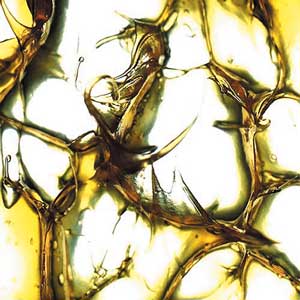了解磺酸钙稠化剂
Calcium Sulfonate Thickeners
-----掌握如何为设备选择合适的润滑油脂.
Grease is grease, right? Unfortunately, the answer is not that simple, because there are many types of greases. If the right grease is not being used in equipment, you could be paying too much for replacement parts. On the other hand, the right grease can allow equipment to run for years without a maintenance problem. The key is learning which grease is right for your needs.
Calcium Sulfonate
Not new to the grease scene, calcium sulfonate thickeners have been around for almost 50 years. This particular type of grease has inherent extreme pressure (EP) properties that stand out from the rest. These properties, combined with the fact that it can be formulated for use in H-1 (food-grade) applications, make it an attractive alternative to other greases.
Background
There are a number of grease thickeners available, each with its own strengths and weaknesses. Briefly, typical lithium-based greases (the most common) are made from a fatty acid, usually 12-hydroxystearic acid, and a lithium base to produce a simple soap which acts as the grease thickener. Components are then added to give it EP and other desirable properties that allow equipment to run at peak performance.

Figure 1. Calcium Sulfonate Grease
To make a lithium-based complex grease, part of the fatty acid is replaced with another acid (usually a diacid), which makes the complex soap. This type of mixed soap structure has special properties that enable the grease to be heated to a higher temperature without losing its structure or oil separating from the thickener. This maximum temperature is referred to as the dropping point. The dropping point is critical because it is the point at which the grease reverts back to a liquid (the oil separates from the thickener). Calcium sulfonate-based greases have a higher dropping point, making them attractive for some high-temperature applications.
Calcium sulfonate greases are made by converting a fluid detergent that contains amorphous calcium carbonate to a grease containing calcite particles. Because of the calcite particles’ lubricating properties, performance additives containing sulfur, phosphorous or zinc may not be needed. This is why some calcium sulfonate-based greases are attractive to the food industry.
The Art of Making Grease
Max Born, a German mathematician and physicist, once said, “Science is not formal logic. It needs the free play of the mind in as great a degree as any other creative art.” Making a grease is no exception. With respect to calcium sulfonate greases, the art involves the process used to convert the detergent to grease. How one executes this can affect the EP performance and dropping point. There’s more to the art of making grease. There is a range of manufacturers, and sometimes the process used for one manufacturer’s equipment must be modified for another. Therefore, art also plays a role in the manufacturing process.
Concerns with Calcium Sulfonates
Although calcium sulfonate greases have desirable properties, an inhibiting factor is the cost. Calcite particles are the business end of making the product work, but reaching that point can be expensive. In addition, calcium sulfonate supply is limited, while costs are escalating. Plants are operating at capacity, and grease is not the only bidder. Calcium sulfonates are used in engine oil, metalworking, automatic transmission fluid, industrial and automotive gear oil additives as well as other applications. To complicate the situation, let’s compare the treat rates. Heavy-duty diesel applications require an approximate treat level of five percent. In grease applications, the treat levels spike to between 20 and 50 percent. That’s a big difference and a major reason for the high cost.
Another downside is their performance with respect to pumpability and water sprayoff. Pumpability is a concern that can be alleviated through proper base oil selection. In the ASTM D4049 sprayoff test, a thin layer of grease is placed on a panel and sprayed with water. After the test is completed, the percent of grease lost is calculated. Many calcium sulfonate greases typically show significant sprayoff.